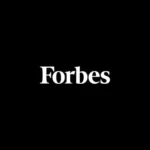How to Stand Out in a Crowded Media Environment
In a media landscape that’s constantly shifting, many organizations are left wondering how they can best cut through the noise and tell their story. While many companies feel compelled to join every new platform, this approach could actually compromise their ability to reach target audiences. We sat down recently with Miller Ink Account Executive Ben Parnes, to discuss how understanding your brand and magnifying your voice will be one of the most important developments in communications and public relations in the coming decade.
How long have you been at Miller Ink?
I started on September 1, 2020, so I’ve been here for just over a year.
What is your professional background?
My professional background stretches across several different sectors. I’ve worked in the non-profit sector, for an economic development organization, and for a private sector e-commerce business. While working at Gap, Inc., I was a web producer and managed front-end content for international Gap.com websites. I managed fast-paced, complex projects, working closely alongside developers, marketers, designers, and merchandisers. The challenges of working across multiple teams, with different skill sets and competing deadlines, gave me a lot of project management experience. I’ve also done individual consulting in non-profit marketing and social media management. And most recently, I received a Master’s in Public Policy, which rounded out my experience before coming to Miller Ink.
What is your role at Miller Ink?
I am an Account Executive, which means I work across multiple accounts and manage the relationship between clients and our internal teams. I also oversee the day-to-day operations for everything that goes into account management for clients, which have included a wide range of industries – such as non-profits, political advocacy groups, health care companies, education foundations, and entertainment organizations.
When beginning a new client project, what is your approach to building a winning strategy?
When thinking about strategy for any project, our primary focus is the client’s goal. We always start by asking the client, “Who is your target audience? What is your primary objective?” It’s important to think about top-level goals within any brand, organization, or company, and how individual deliverables, initiatives, or campaigns fold into those goals.
We then make sure that we have tangible expectations for what we’re trying to achieve, whether it’s a single media event, a long-term marketing campaign, or an op-ed strategy. This helps us ensure that expectations in terms of scope and budget are communicated to the client. Other aspects that play into strategy include understanding the current media environment, being aware of what competitors are doing, and tracking the conversation across a particular industry. So, a lot goes into strategy depending on what any given project is trying to accomplish.
What aspect of strategic communications do you think will become more important over the next ten years?
One of the biggest challenges in communications is setting yourself apart and establishing a voice that cuts through the noisy media environment. Traditional establishment media sources face significant challenges from growing trends across the online landscape. There are so many marketing channels that seem to grow by the day. On social media there’s Twitter, Facebook, Instagram, TikTok, and Clubhouse, in print there’s a growing trend of individual journalists to leave traditional outlets to start their own content subscription models, and so on. For organizations, brands, and individuals, it can be tempting to want to be on every platform at once. However, it’s important to have a streamlined understanding of your organizational value propositions and where you can best magnify your voice, rather than spread yourself too thin. You can’t be everywhere, so it’s important to operate in your sweet spot, speak to your audience where they are, and home in on where your voice is the strongest.
It’s our job to help clients understand their strengths, values, and opportunities, and to ensure they understand where best they can stand out as thought leaders. Traditional institutions used to be the gatekeepers of communication and influence, but that has subsided. Today, it’s difficult for the public to know who to trust and where to seek out information. So on our end, and from a client’s perspective, understanding how to navigate this rapidly changing media landscape is the most important factor in the near future.
Given your experience in the non-profit sector, what are some trends you’re seeing in that space today?
A couple of things come to mind. Today, there’s a greater expectation from the public for non-profits to be seen as leaders when it comes to establishing and implementing guiding principles, ethics, and values. The public is looking more at non-profit leaders—as opposed to corporate executives—to have a seat at the table when it comes to setting cultural norms. We’ve seen this play out as many non-profit organizations have discovered how to use modern technology in very clever ways, making them much more relevant players in cultural conversations and influential in the media space.
Not all non-profits are the same, but with the ubiquity of modern technology and social media, there are a lot of non-profit start-ups who capitalized on technological innovation to grow. When I worked at Kiva, a non-profit, but with a strong start-up culture, we relied on crowdfunding tools to push the envelope of what non-profits could accomplish. Instead of doing telethons to raise money, we utilized new technological means to enhance the mission. Charity Water is another organization that has prioritized marketing and branding to spur its growth. Traditional non-profits didn’t utilize the types of tools that for-profit companies relied on. With technological innovation, and the younger generation entering the nonprofit sector, we’ve seen a shift in the culture of the industry.
Another growth area I see for the non-profit sector is the concept of effective altruism. This means using economic and corporate impact standards for judging a non-profit’s footprint. One common criticism of non-profits is that they raise significant sums money for a certain cause, but the effectiveness of the funding is often opaque. So there’s been a movement among a lot of non-profits, particularly innovative ones, to quantify their impact and make that information public. It’s no longer enough to simply raise funds to combat a malady like child poverty or food insecurity; you must quantify the impact that you’re having on the mission you set out to accomplish. In turn, this generates more trust among individual donors, foundations, and grant writers.
This is something that a lot of non-profits still lag behind on, particularly more institutional ones. It’s a big shift for them. Ultimately, it’s a challenging, yet positive development because it’s more important to know the impact you’re having versus the absolute dollars you’re raising. You’d think that it would have always been like that, but some impact is hard to track, especially in a causal way.
This is what our next initiative is all about—combining effective altruism with goal setting. On one of my accounts, we have a specific campaign launching soon to raise money, and for that we have to set very clear quantifiable objectives to receive the grant. We’ll need report to the grant foundation the tangible impact of the grant funding. This will help tie non-profits to results and provide a greater opportunity to access additional grant or foundation funding because you’ve shown a track record of documenting your impact.
What do you like to do when you’re not working?
I enjoy hiking, bike riding, and camping. I’m also a big sports fan, especially baseball, which is great now as sporting events are opening up again. My favorite team is the San Francisco Giants, so there’s a little friendly rivalry with others at Miller Ink, many from LA who are obviously Dodger fans. Additionally, my wife and I love cooking. Recently, we’ve enjoyed going to our local weekly farmers market to find fresh produce and good-looking cuts of meat. After we both get off work, there’s nothing better than putting on some good music and cooking together – often fending off our cat, Margot, as she begs for treats.
If you were a punctuation mark, which one would you be?
Initially, I’d say a comma because I always think there’s more to the story and often caveat a lot of what I say. My wife often teases me for one of my most used phrases which is “it’s more complicated than that.” In reality, I’d be a comma in a run-on sentence.




